This is the second of a two-part series exploring alternative wall finishes. Part I, published in the Dec. 2006 issue, discusses how to apply brick, stone, and vertical stamped concrete. Part II deals with applying siding and similar products.
Lap siding is a popular exterior finish for both residential and commercial ICF jobs. Cement-board siding is particularly popular, due to its durability, ease of installation and fire-resistant qualities.
While ICF walls look dramatically different from plywood-sheathed frame construction, installation methods are surprisingly similar. In fact, any siding that can be applied to a wood-frame building can be applied to ICFs. With a little attention at the corners, siding can be installed more quickly and cost-effectively than any other exterior finish.
Siding is popular for both aesthetic reasons and price. James Hardie’s Hardiplank, which claims to be the “most preferred, most used brand of fiber-cement siding” gives the following price comparison on their website:
“While prices vary from market to market, this is how Hardiplank siding compares in installed price with its competitors:
- Less expensive than Brick
- Less expensive than Synthetic Stucco
- Equal or less than Hardboard Siding
- More expensive than Vinyl”
“Installation over ICFs is very similar to wood or steel frame,” says Mark VanDorselaer, a tech representative at James Hardie Building Products.
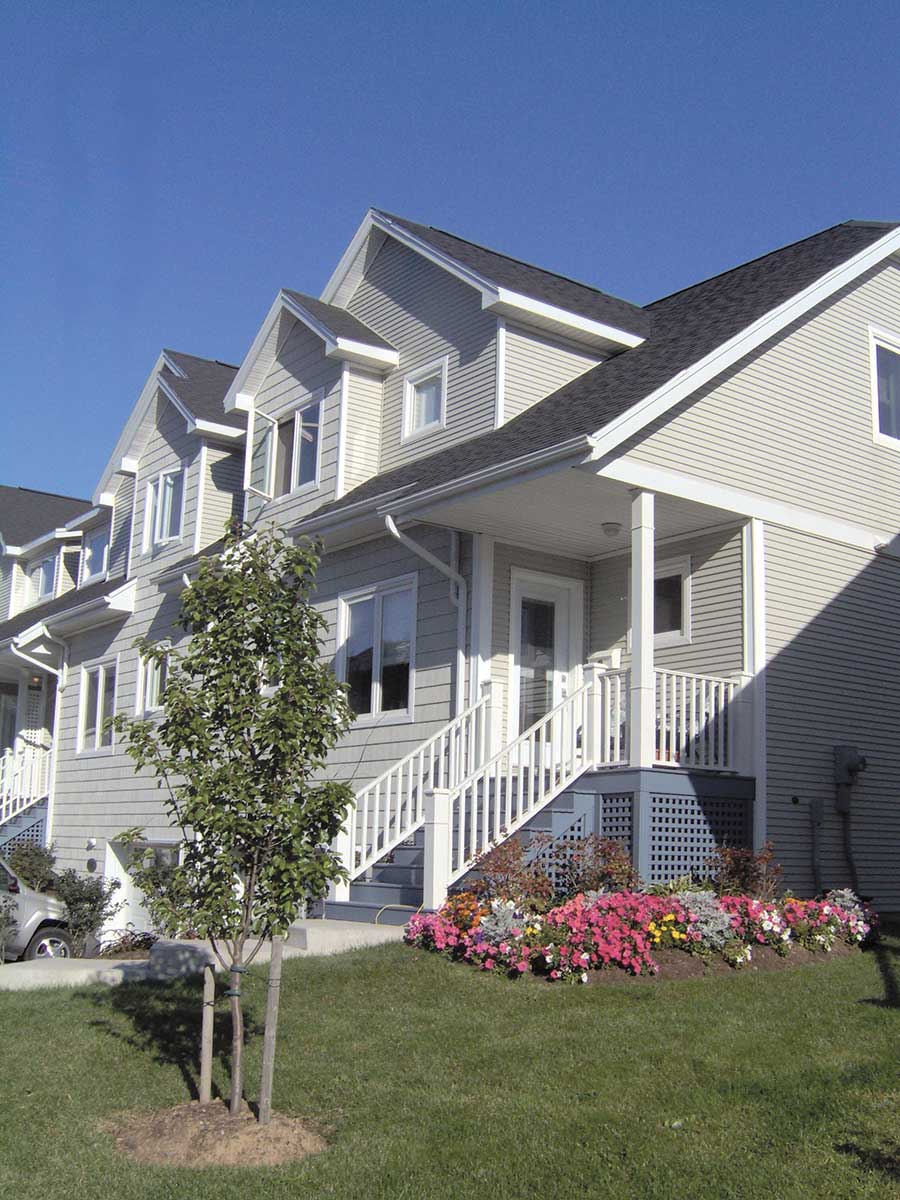
Vinyl siding is a low-cost exterior finish that looks great and requires little maintenance, as this ICF development in Halifax demonstrates.
With most major brands of ICF, the siding can be applied directly to the foam. “The ties should have the same holding resistance as 20 gauge steel stud,” says VanDorselaer, “so if you follow the fastening instructions for steel construction, there should be no problems.”
Robert Kindsvogel, owner of Silver Spur Construction, an Oregon-based building contractor, agrees that contractors can install any type of siding over ICFs.
“We tell people that we can install any finish they want,” he says. Kindsvogel has installed cement-board, cedar lap, and even vinyl on custom homes over the years, with very few problems. The biggest challenges, he says, are at the corners, where furring strips may not exist; and the horizontal joints between blocks, since most furring strips usually don’t extend the full height of the block.
Hal Dyck, a siding contractor who recently completed a challenging ICF project in British Columbia, says, “The job went better than I figured it would. The walls were straighter than stick frame, which led to a smoother job. The local codes said you didn’t need a vapor barrier, so we saved a little there, as well.”
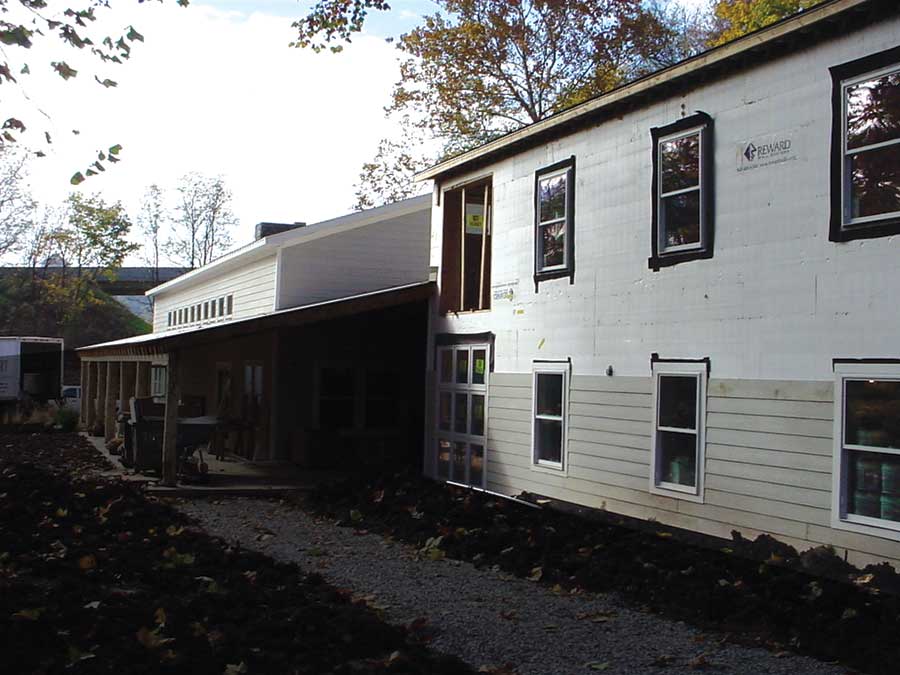
These before-and-after shots show how cement-board siding can be a great choice for light commercial construction as well.
Weather Barriers
Most ICFs will qualify as a “weather resistant barrier” and no additional sheathing is necessary. To be sure, check with your form manufacturer.
The LOGIX Installation manual, for instance, states, “Metal and vinyl siding can be installed directly over the top of the EPS… Hardiplank sidings can be attached directly onto the LOGIX embedded webs. Patrick Chan, a regional manager for the company, explains, “[Our] ICF walls do not require an air or vapor barrier. The closed-cell low permeance Type II EPS foam has a lower water permeance than what the building code requires.”
If “weather resistant” isn’t specified, the wall should be sheathed for the warranty to work.
Regardless, ICFs do require flashings associated with doors and windows. Penetration details should be in accordance with good building practice.
Corners
Dyck says siding contractors do face a number of installation challenges when dealing with ICFs. “The only place you can attach the siding is where the plastic [furring] strips are,” he says. “If a strip isn’t within 5-6 inches of a window, the boards will be loose. And that applies to all openings: doors, windows, even utility boxes.”
“Trim work around the corners can be difficult,” agrees Kindsvogel, “and it’s extremely product related. You really have to know the product you’re working with.”
Over the years, contractors have developed a number of simple solutions to dealing with these challenges. The solution that works best for you will probably depend on your experience, code requirements, and the products you’re working with.
The reason corners present difficulties is that most ICFs don’t have furring strips at the corners to attach trimboards to.
The easiest solution, of course, is to select a brand that does have attachment points at this location, such as LOGIX, BuildBlock or IntegraSpec. Amvic recently redesigned their corner block to address this exact problem; the new block provides a 3×5 inch area on both sides of the corner.
If your preferred ICF brand doesn’t have corner attachment points, it’s still relatively easy to attach the corner boards.
Kindsvogel simply wraps the corner with 28 gauge metal flashing, screwed to the nearest webs on each side. While he occasionally wraps the entire corner, usually he just uses a 3-inch band on each course and has no problems.
Dyck’s method is more time consuming, but sturdy. After the concrete is poured and cured, he removes the foam from the corners and fastens 2x6s to the concrete with anchor bolts. He admits that this was more wood than necessary, but he also knows the connection is solid.
Some contractors attach cornerboards with foam adhesive, and claim the bond is permanent and weatherproof, but others advise against it.
“The building inspectors that I have dealt with in the past are very hesitant about allowing any liquid adhesives to be used on any item in contact with the foam,” says David Zimmerman, a Reward distributor in Wisconsin. “Their concern is that the longevity of the bond has not been tested, even though the adhesives may claim to be foam compatible.”
Door and window openings usually don’t present a problem, since the siding channel stock can be fastened to whatever type of buck material is chosen, in a similar fashion as a wood framed building.
Gaps
Another common challenge is how to handle the gaps between furring strips. Most don’t run the full height of the block, which leaves one to two inches of foam between every course. These gaps come in handy when electricians cut horizontal utility chases, but can be a real headache for siding installers.
“On a nine-foot wall, we had two rows where we had nothing to nail into,” says Dyck. “We decided to face-nail the siding, then came back and painted the nail heads to blend in.
Kindsvogel uses metal flashing to solve this challenge as well. A 3” roll covers the gap effectively, he says, and provides plenty of holding power for screws.
A third option is to use a brand that has a full-height furring strip. These include Standard ICF, Fox Blocks, NUDURA, and TF System. Incidentally, full-length ties also lead to easier pours, since they eliminate form compression.
Depending on your climate and the type of siding, the best option may be furring out the wall with ¾” lumber. Attach the lumber to the webs with screws, then nail the siding to the wood.
This has several advantages. First, it allows the siding installers to nail—instead of screw—the siding into place. Second, it allows air to circulate behind the siding, which may extend the life of both the material and the paint.
If you are applying siding vertically, this is perhaps the best way to ensure solid attachments. Of course, if the siding is vertical, the furring strips would run horizontally.
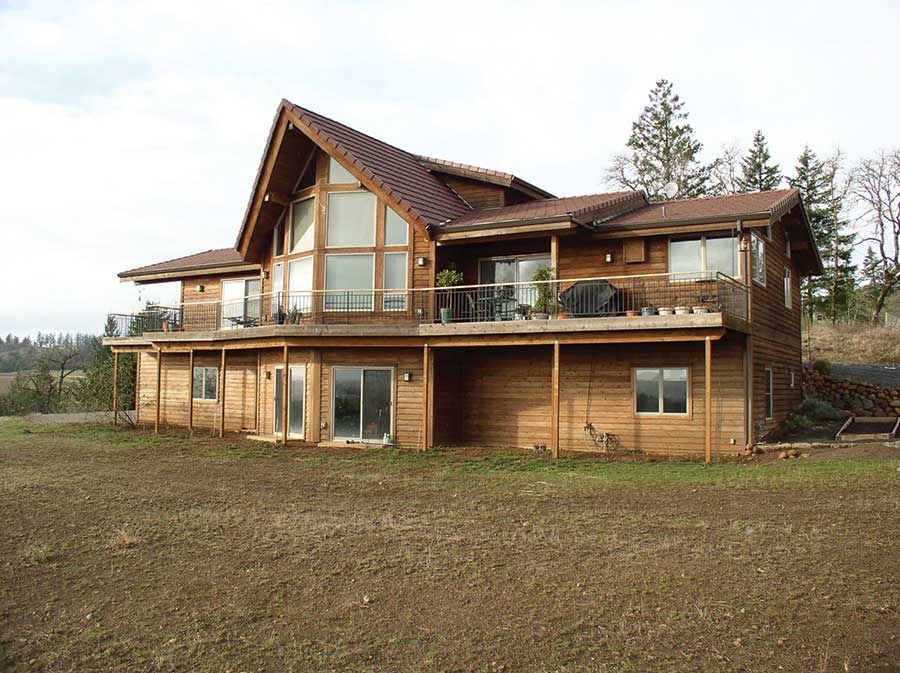
ICFs accept just about every kind of siding, including vertical steel (bottom) cement-board (below) and real cedar (above).
Air Gaps and Nailing Strips
If you are applying real wood siding, use furring strips. The LOGIX installation manual explains, “A good practice for installing wood siding on a wall is to apply the siding over vertical 1” x 2” (25mm x 51mm) wood nailing strips with a screen at the bottom. The screen keeps insects out while the space allows air to circulate behind the siding. The air circulation helps equalize the moisture content in the wood siding, which makes for much more dimensionally stable siding and longer lasting application.”
The Wood Products Council claims that this air gap will extend by several times the normal life of both siding and paint.
John Krzic, technical director at Amvic, says, “Some of that is based on weather conditions, and some of it is based on the type of siding. The idea is to let the siding breathe and dry out on both sides equally.”
Nail vs. Screw
The biggest question in ICF siding is which type of fastener to use.
“I’ve had guys try and convince me that they can nail into the plastic furring strips, and you just can’t,” says Kindsvogel. “Even with ring-shank nails, it just doesn’t work.”
The siding manufacturers all recommend screws. “We recommend using a #8 galvanized screw; 16 inches on center is always best, but in some areas of the country, you can go 24,” says VanDorselaer.
Most ICF manufacturers also recommend screws. Patrick Chan, territory manager for LOGIX, states a common position. “Although air guns can be used, LOGIX ICF highly recommends the use of screw guns when attaching cement composite sidings. Non-corrosive #8 course thread wood screws are commonly used with Hardi Siding products.” Chan recommends a closer spacing—8” to 16” on center—and a longer screw—2 ½” to 3”—for optimal holding power.
Kindsvogel says his crew originally used a self-feed screw gun, but “It was hard to feel with a self feed gun,” he says. He uses electric screwdrivers to drive the screws individually.
Dyck actually conducted a pull-out test for one client. “We tried a number of systems (hand nailing, screwing, air nails, etc.),” he says. “Hand nailing has poor quality and is slow, screwing is much too slow plus the screws have to be counter sunk which compromises the finish on the siding. Nailing with air tools seems to be the best.”
“We did a test section, using a nail gun with 2” galvanized common nails fastened every 8” to the webs. With proper tool adjustment the nails remain flush with the finish and the wire that holds the nails together in the coil acts like a fish barb. We pulled on the plank to see if the nail would pull out, but the plank broke before the nail did.”
Zimmerman, the Wisconsin distributor, also typically recommends nailing. “I typically recommend a ring-shank galvanized roofing nail,” he says. “We have vinyl siding, attached using straight shank roofing nails into plastic furring strips, last a full 10 years
and counting.”
One key is the weight of the siding. Narrow siding, as well as lightweight vinyl, can probably be nailed. Wider, heavier planks, including half-log siding, will require screws.

ICFs accept just about every kind of siding, including vertical steel (above) cement-board (below) and real cedar (lower).
Another factor is how deeply the webs are embedded beneath the foam. Arxx Building Products, which makes the only block with an exposed web, claims their “exposed web provides a solid bearing for the attachment of finishes like… siding and brick ties. This dramatically reduces the likelihood of screw pops or siding sag.” Other manufacturers say that they have encountered no problems with sag when the siding has been properly screwed into place. Chan, at LOGIX, says that longer screws provide additional holding power and pull the siding in tight to prevent sagging.
The challenge is setting the screw to the right depth. If the screw is driven to deeply, it will compress the foam between the siding and the web and the siding will visibly bow between fasteners. If the screw is not tight enough, the siding will sag.
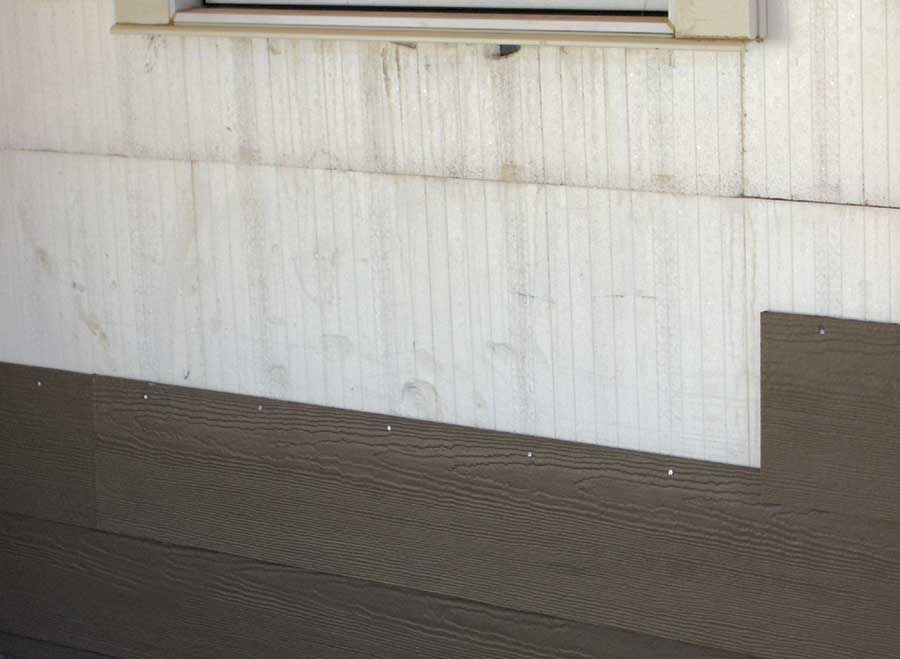
Siding can be installed with a nail gun, but most manufacturers recommend screws for maximum durability.
The bottom line is, while there is clearly more than one good method to fasten siding to the wall, in order for the warranty to be valid, installers must follow local codes and the manufacturer’s recommendations regarding the size and spacing of fasteners.
By following their recommendations and the suggestions in this article, you will be able to attach virtually any type of siding to ICF walls with no problems.

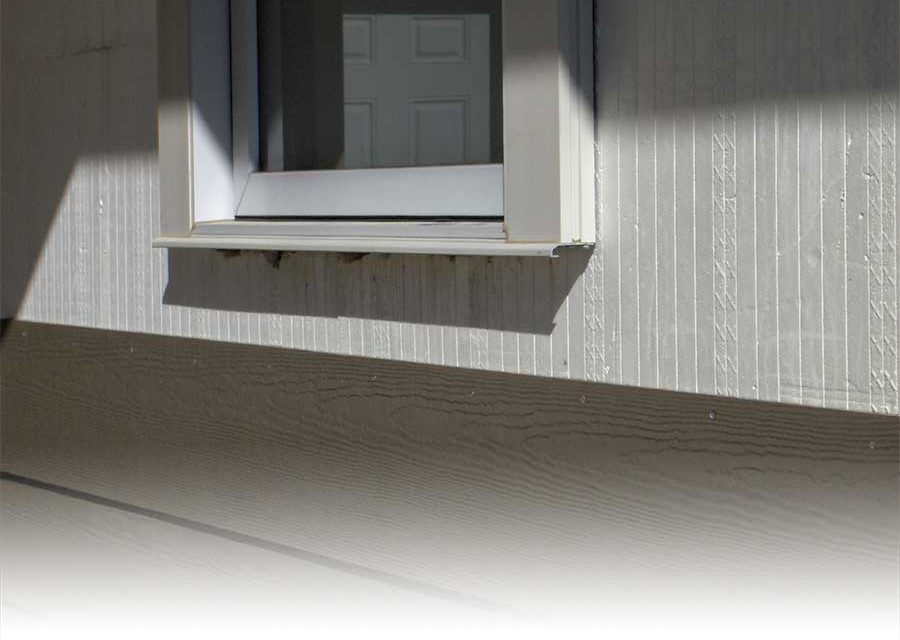
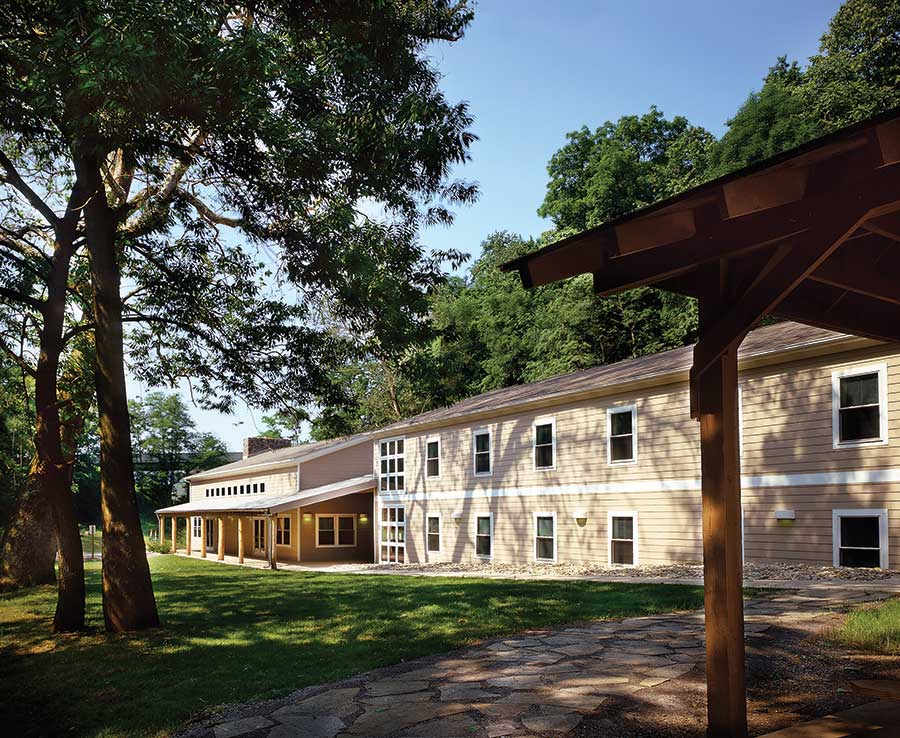
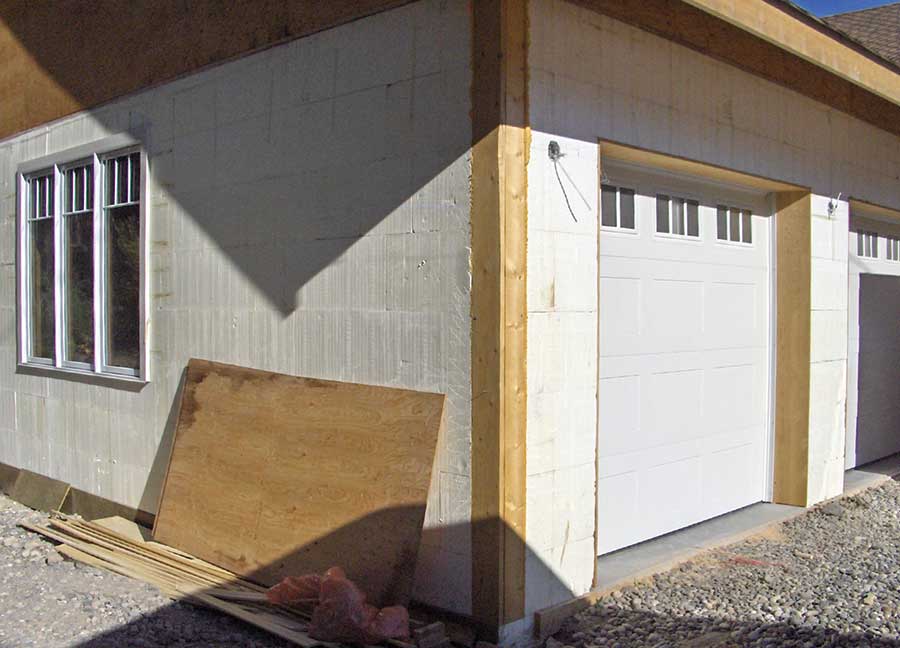
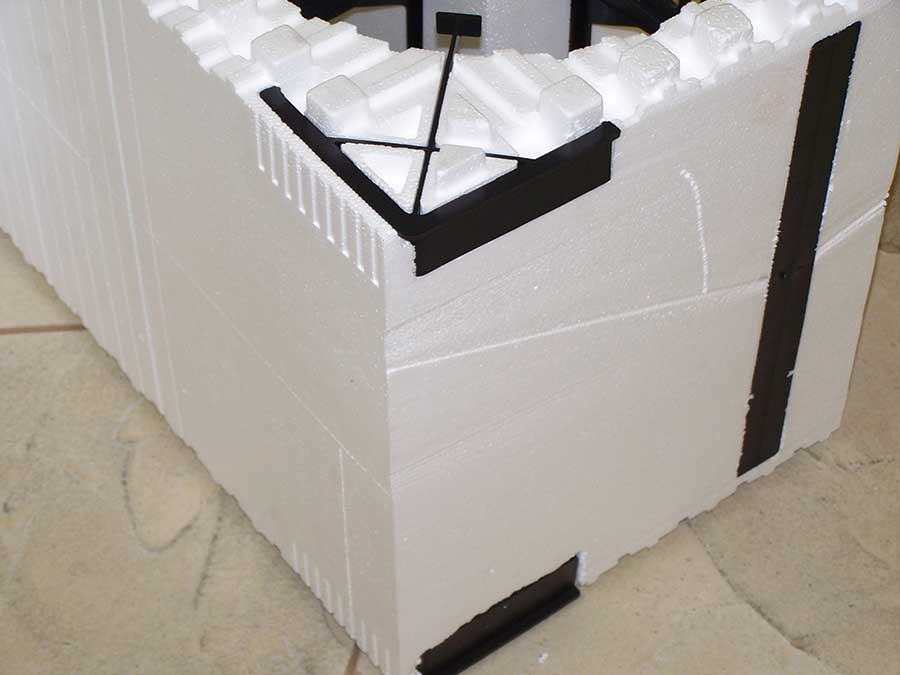
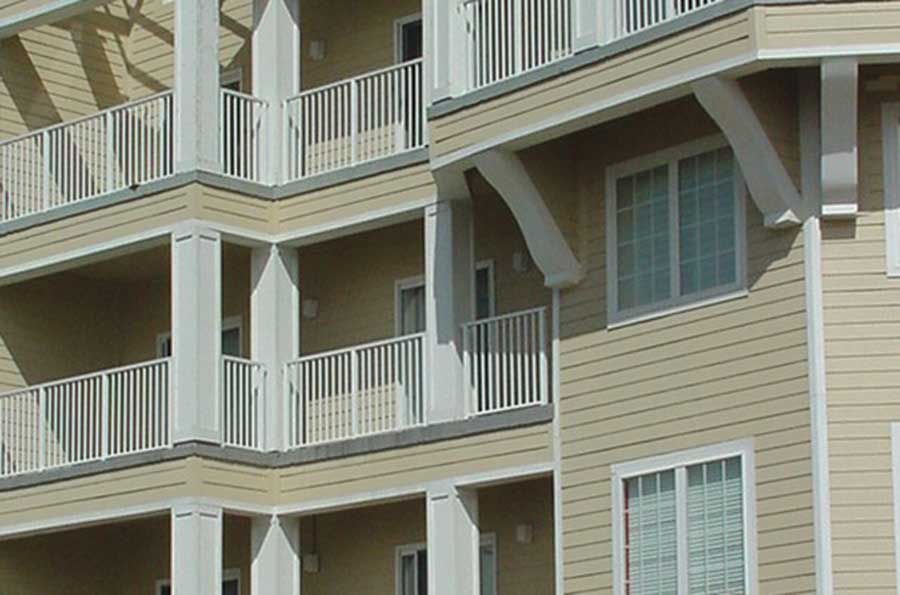
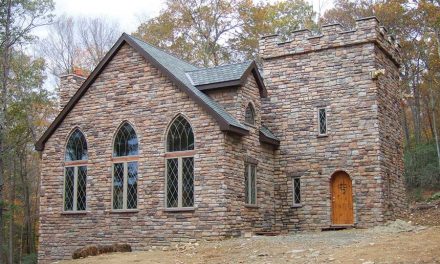
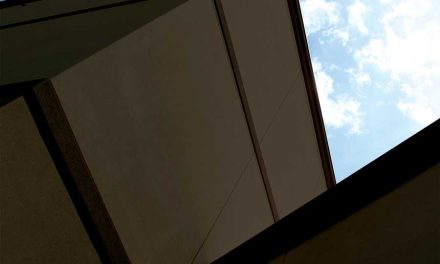
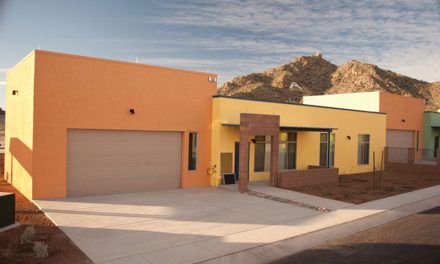









Hi can you tell me if I can put vinyl siding on ice block in January in Newfoundland.